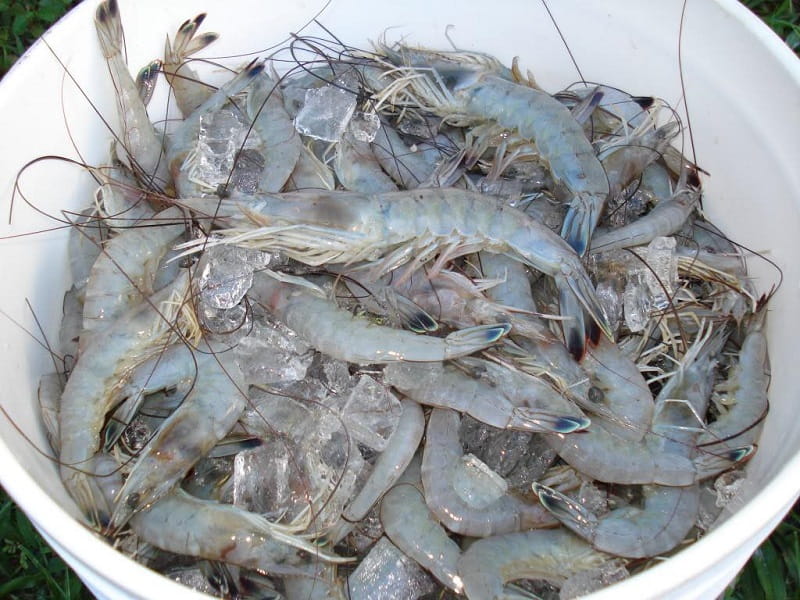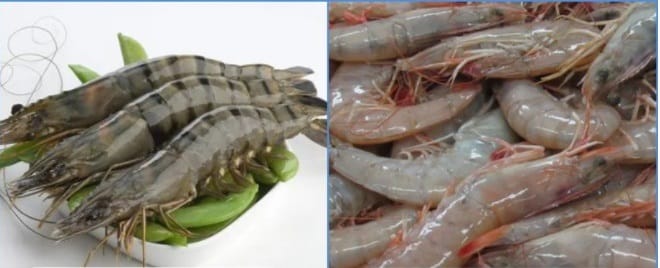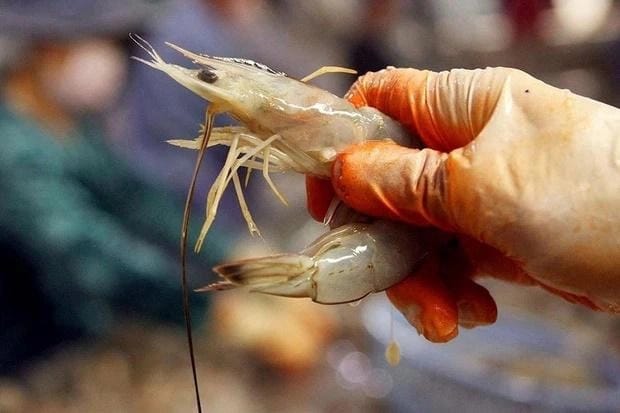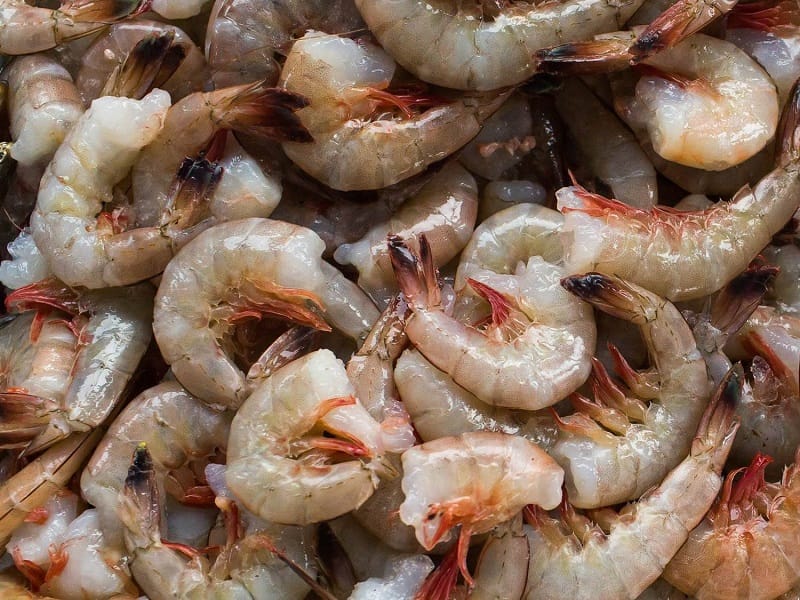If you’re a fan of seafood, then you know how delicious and versatile shrimp can be. However, as with any food, shrimp can go bad if not properly stored or cooked. Eating spoiled shrimp can lead to food poisoning and severe stomach upset, so it’s essential to know if your shrimp is fresh or past its prime.
This guide will discuss how to tell if shrimp is bad, including tips for identifying signs of spoilage and proper storage techniques to extend its shelf life. Whether shopping for shrimp in the grocery store or sorting through your freezer stash, these guidelines will help determine if your shrimp is safe to consume.
Does Fresh Shrimp Usually Have A Particular Smell Or Odor?

The short answer is yes; fresh shrimp usually has a particular smell or odor. Shrimp have a distinct, briny aroma that is unmistakable. While the smell may not be pleasant to some, it is a sign that the seafood is fresh and unspoiled.
The odor can be quite pleasant for those who are used to the smell of fresh shrimp. Some describe it as a sweet, salty aroma similar to the sea. Others may even find the smell to be quite fragrant.
On the other hand, if you notice an extremely strong or bad odor from the shrimp, it is likely spoiled. Spoiled shrimp will have a very strong, fishy odor that can be unpleasant. It would be best if you discarded any shrimp that has this odor.
When buying fresh shrimp, ensure it is refrigerated and has not been sitting out for too long. You should also select shrimp that is firm and has a translucent texture. If you buy frozen shrimp, thaw it properly and cook it right away.
In addition to the smell of fresh shrimp, you may also notice a slight ammonia smell. This is normal and caused by a compound naturally found in shrimp. It is nothing to be alarmed about and is completely safe to eat.
What’s the Shelf Life of Shrimp?
How long can you keep shrimp before it goes bad? The answer to this question really depends on the type of shrimp and how it’s been stored. Generally speaking, raw shrimp has a shorter shelf life than cooked shrimp.
If you buy raw shrimp, it’s best to keep it in the refrigerator and use it within a few days. If frozen, it can last up to several months in the freezer. Cooked shrimp, on the other hand, can last up to a week in the refrigerator.
To keep shrimp fresh for as long as possible, it’s essential to store it properly. If you won’t use it right away, put it in an airtight container or plastic bag and store it in the refrigerator or freezer. It’s also a good idea to buy shrimp before you cook it, as this will help preserve its freshness.
If you plan on freezing shrimp, it’s important to do so as soon as you purchase it. This will prevent bacteria from growing on the shrimp and help it stay fresh for longer.
So, what’s the shelf life of shrimp? Generally, raw shrimp can last a few days in the refrigerator, while cooked shrimp can last up to a week. On the other hand, frozen shrimp can last up to several months. Of course, it’s always best to use shrimp as soon as possible after purchase.
How To Tell If Shrimp Is Bad?
Firstly, a bad shrimp will have a fishy smell, an immediate and noticeable sign that it’s time to take it off the menu. Secondly, fresh shrimp should be pink or grayish, while faded or off-colored shrimp are likely to be spoiled. Additionally, fresh raw shrimp should be slightly translucent, and the flesh and the shell should appear taut and glossy. On the other hand, a bad shrimp will have black spots and a slimy texture. The best way to inspect shrimp is to smell and look at it, with a fresh one smelling of either salt or having no strong odor.
Knowing how to tell if shrimp is bad is an essential skill that can help you ensure your seafood is always as fresh and delicious as possible. We’ll discuss what to look for when determining if shrimp has gone bad so you can always buy the best quality seafood for your meals.
Foul smell
A foul smell is the first thing to look for when determining if shrimp is bad. If the shrimp has a strange odor or smells off, it will likely start to spoil. Discarding any shrimp with a strange odor is best, as it won’t taste good and could cause food poisoning.
Slimy
The next thing to examine is the texture of the shrimp. If it feels slimy or tacky when you touch it, it likely means the shrimp are starting to spoil. Additionally, if the shrimp has black spots or dots on it, this is a sign that it has started to go bad and should be discarded.
Off in color
The color of the shrimp is also a tell-tale sign of bad shrimp. Fresh shrimp should be pinkish-orange in color. If the shrimp is off in color, it’s likely gone bad and should not be eaten.
Black Dots
If there are black dots on the shrimp, it isn’t good. Black dots on the shrimp indicate that it has started to spoil and should not be eaten.
Dry or Shrunken Eyes
The eyes of a shrimp are a great way to tell if it’s gone wrong. If you’re purchasing raw shrimp, you should be able to see the eyes through the transparent shell. The shrimp has probably gone bad if the eyes are dry, sunken, or missing entirely.
Check the Best by Date or Sell by Date
Check the “best by” or “sell by” date on the shrimp package. If the date has passed, the shrimp may be unsafe to eat. It’s best to follow the date labels on the package.
Warning
If you’ve already purchased the shrimp, you may be able to tell if it’s bad by the smell. If it has a strong fishy smell, it’s likely gone bad. If there is a strong ammonia smell, it’s definitely bad and should not be eaten.
Read more:
How to Tell If Frozen Shrimp is Bad?

Fortunately, it’s relatively easy to tell if your frozen shrimp is bad. Here are some signs to look out for that can help you determine if your frozen shrimp is safe.
- Smell Test: One of the simplest ways to tell if frozen shrimp is bad is to sniff it. Frozen shrimp should smell like salty seawater; it’s probably bad if the smell is off or fishy.
- Texture Test: Frozen shrimp should be firm and plump. If the shrimp is slimy, mushy, or otherwise doesn’t have a good texture, it’s best to throw it out.
- Color Test: Fresh and frozen shrimp should have a pinkish-gray color. It isn’t good if the shrimp is discolored or has a grayish or greenish tint.
- Discolorations: If your frozen shrimp has any odd discolorations, such as white, yellow, or gray spots, it isn’t good and should be thrown out.
- Odors: Frozen shrimp should never have any off odors, such as sulfur or rotting smells. If you detect strange smells, your shrimp is likely bad and should be discarded.
If you notice any of the above signs that your frozen shrimp is bad, it’s best to throw it out. Following the above steps, you can easily tell if your frozen shrimp is bad and prevent yourself from getting sick.
How To Tell If Cooked Shrimp Is Bad?
Cooking seafood can be tricky, especially when telling if cooked shrimp is bad. There are a few signs that you can look for that will help you determine if cooked shrimp has gone bad.
- The first sign to look for is the smell. Cooked shrimp should have a mild, slightly sweet scent. If you notice a strong, fishy odor, your cooked shrimp will likely go second sign to look for is the appearance. Cooked shrimp should be bright pink or white and appear firm and moist. If the shrimp appears slimy or discolored, it has likely gone bad.
- The third sign to look for is texture. Cooked shrimp should be springy and tender, not slimy or mushy. If the shrimp feels slimy or mushy, it has likely gone bad.
- The fourth sign to look for is taste. Cooked shrimp should have a mild, slightly sweet taste. If the shrimp tastes fishy or sour, it has likely gone bad.
If you notice any of these signs when examining cooked shrimp, it’s best to throw it away and purchase a fresh batch.
How To Tell If Thawed Shrimp Is Bad?
The most important thing to remember about thawed shrimp is that it should always be cooked immediately after thawing. It would be best if you never refroze thawed shrimp. The shrimp may become dry, tough, and tasteless if you do.
When you are ready to cook the shrimp, a few indicators can tell you if the shrimp is still safe to consume. The first indicator is the smell. Fresh, thawed shrimp should have a mild, slightly sweet aroma. If the shrimp has a strong, fishy smell, it isn’t good and should be discarded.
The second indicator is the color. Fresh, thawed shrimp should be a bright pinkish-gray color. If the shrimp has a grayish-white color, it isn’t good and should be discarded.
The third indicator is the texture. Fresh, thawed shrimp should be firm and have a nice, springy texture. If the shrimp is slimy or mushy, it isn’t good and should be discarded.
What Happens If You Eat Bad Shrimp?

If you’ve ever eaten bad shrimp, you’re likely familiar with the unpleasant side effects that can occur. Eating bad shrimp can cause food poisoning, which can lead to serious health complications. Here’s what you need to know about the potential risks of eating bad shrimp and how to protect yourself.
When shrimp goes bad, it’s usually due to the presence of bacteria such as salmonella and vibrio. These bacteria can be ingested if the shrimp is undercooked, stored in unsanitary conditions, or handled improperly. Eating bad shrimp can cause symptoms such as nausea, vomiting, diarrhea, fever, and abdominal pain. In some cases, these symptoms can be severe enough to require hospitalization.
It’s also important to remember that cooking shrimp does not guarantee safety. To fully kill the bacteria, shrimp must be cooked to an internal temperature of 145°F. If shrimp is not cooked properly, the bacteria can still survive, leading to potential food poisoning.
To help protect yourself from the potential risks of bad shrimp, it’s essential to take the necessary steps to ensure the shrimp is safe to eat. Before purchasing shrimp, be sure to check the sell-by date and the condition of the packaging. If the shrimp is not fresh and has a strong odor, it’s best to avoid it.
Always keep shrimp refrigerated and cook it thoroughly when it comes to storage and preparation. If you’re eating out, be sure to ask your server about the freshness and practice of the shrimp.
How Long Does Shrimp Last?
According to USDA recommendations, raw shrimp can be stored in the freezer for up to 12 months, while cooked shrimp should be consumed within three months of freezing. Raw shrimp can last up to two days in the refrigerator, while cooked shrimp can last about three days. To ensure maximum freshness and quality, it’s crucial to store shrimp properly in the fridge and never to consume shrimp that’s gone off or bad. You can enjoy delicious shrimp without any worries with a little care and attention.
How Long Can You Keep Uncooked Shrimp In The Freezer?
According to factual data, uncooked shrimp stored properly can maintain its best quality for about 3 to 6 months, but it will still be safe to consume beyond that time. Labeling the package with the date of purchase is important to ensure they are used before they go bad. However, it’s worth noting that shrimp quality can deteriorate over time, although they remain food safe. Therefore, it’s recommended to use frozen raw shrimp within twelve months for the best quality. Friendly reminder, always thaw frozen shrimp in the refrigerator and enjoy a tasty meal!
Is There A Difference Between Fresh And Frozen Shrimp When Determining If It’s Bad?
Are you wondering if there’s a difference between fresh and frozen shrimp when determining if it’s bad? It can be difficult to tell if shrimp is bad, as new and frozen shrimp have similar characteristics. However, a few key differences can help you tell if your shrimp is still good to eat.
When it comes to fresh shrimp, it’s best to look for signs that it is still alive. Fresh shrimp should be firm and plump, with even coloration. The flesh should be pinkish, the shells should still be intact, and their eyes should still be clear. The shrimp should be discarded as soon as you notice any signs of discoloration, sliminess, or a bad odor.
On the other hand, frozen shrimp should be checked for signs of freezer burn or discoloration. If the shrimp is discolored or slimy, it should not be eaten. The best way to check frozen shrimp is to thaw it in the refrigerator and then check it for any signs of spoilage.
However, it’s also important to remember that shrimp can still be bad even if it looks and smells OK. The only way to ensure your shrimp is safe is to cook it thoroughly. If it’s not fully cooked, there’s always a chance that it could contain harmful bacteria and make you sick.
So, the answer to whether there is a difference between fresh and frozen shrimp when it comes to determining if it’s bad is yes, there is a difference. Fresh shrimp should be alive and firm, with even coloration. Frozen shrimp should be checked for signs of freezer burn or discoloration. And, no matter the type of shrimp, it should always be cooked thoroughly before consumption.
Are There Any Safe Ways To Store Fresh And Frozen Shrimp So They Don’t Go Bad Quickly?

The first and most important thing to do when storing fresh or frozen shrimp is to ensure they are properly refrigerated. Fresh shrimp should be stored in an airtight container and placed in the coldest part of your refrigerator, usually the bottom shelf. If you’re storing frozen shrimp, keep them in their original packaging, or transfer them to an airtight container or resealable plastic bag.
Using or freezing the shrimp within two days of buying it would be best. If you’re not planning to cook or eat the shrimp within that time frame, it’s safer to freeze it. To freeze shrimp, wrap them tightly in plastic wrap or place them in a freezer-safe bag and squeeze out as much air as possible.
When it comes time to thaw frozen shrimp, you should place them in the refrigerator for at least a few hours until they’re completely thawed. Don’t thaw them at room temperature, as this can promote the growth of bacteria.
Conclusion
In conclusion, there are a few key signs to look for when checking to see if shrimp has gone bad. Look for any off odor, slimy film, or discoloration, and always check the sell-by date. If you follow these simple steps, you can ensure that you buy and eat fresh, safe shrimp.
References:

Hey readers! Chip Holland here, and I’m a Manager of this website. My passion for writing about it only matches my passion for BBQ. Follow my blog for mouth-watering recipes, tips, and tricks for the perfect smoke, grill, and BBQ. I’m sure you won’t be disappointed!
